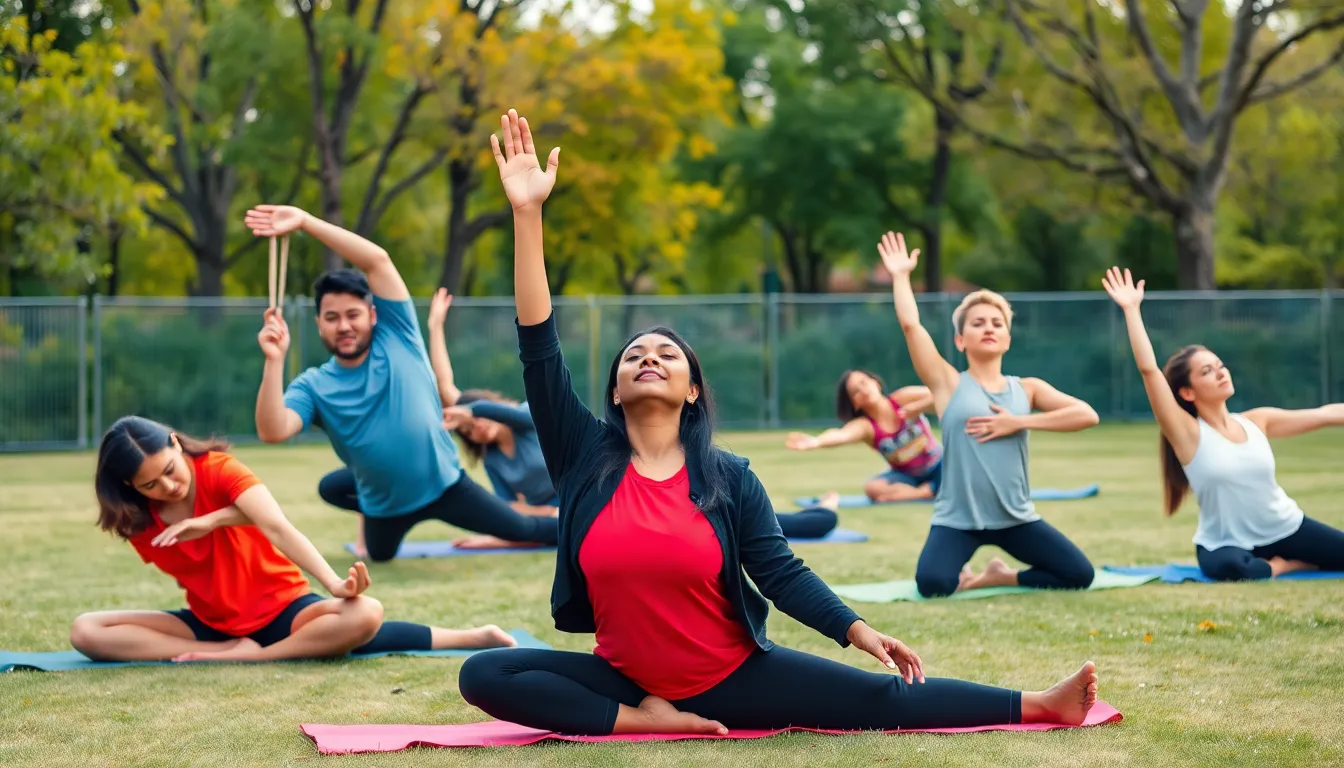In today’s fast-paced world, self-care often takes a backseat. Amid busy schedules and endless to-do lists, many overlook the simple yet transformative practice of stretching. Self-care stretching isn’t just about flexibility; it’s a powerful tool for enhancing physical and mental well-being.
Incorporating stretching into daily routines can reduce stress, improve posture, and boost overall energy levels. Whether it’s a quick morning routine or a calming evening ritual, self-care stretching offers a chance to reconnect with the body and mind. Discovering its benefits can lead to a more balanced and fulfilling lifestyle.
Table of Contents
ToggleUnderstanding Self-Care Stretching
Self-care stretching encompasses intentional movements aimed at enhancing physical and mental well-being. This practice prioritizes personal health, serving as a crucial element in maintaining balance in daily life.
What Is Self-Care Stretching?
Self-care stretching involves a series of gentle, mindful stretches performed for relaxation, flexibility, and overall wellness. It typically includes both dynamic and static stretches, targeting various muscle groups. Examples include neck rolls, hamstring stretches, and seated forward bends. These movements improve circulation and promote muscle relaxation, contributing to better physical health.
Importance of Self-Care in Stretching
Self-care is vital in stretching routines, as it encourages individuals to focus on their physical and emotional needs. Prioritizing self-care through stretching can reduce muscle tension and promote mindfulness, fostering a sense of calm and clarity. Engaging in regular self-care stretching enhances body awareness and encourages positive mental health. This practice not only alleviates stress but also cultivates resilience against daily challenges.
Benefits of Self-Care Stretching

Self-care stretching offers numerous advantages that enhance both physical and mental wellness. Integrating these practices into daily life can significantly improve overall quality of life.
Physical Benefits
Self-care stretching improves flexibility and range of motion significantly. Regular stretching helps alleviate muscle tightness and contributes to better posture. Benefits include:
- Increased Flexibility: Enhancing muscle elasticity through consistent stretching practices can aid athletic performance.
- Improved Circulation: Stretching promotes blood flow to muscles, delivering essential nutrients and oxygen, fostering quicker recovery.
- Pain Relief: Targeting specific muscle groups reduces tension, providing relief from chronic pain or discomfort.
- Injury Prevention: Maintaining flexibility reduces the likelihood of strains or sprains during physical activities.
Mental Benefits
- Stress Reduction: Engaging in stretching routines lowers cortisol levels, reducing overall stress and anxiety.
- Enhanced Mindfulness: Focusing on body movements during stretching fosters present-moment awareness, improving mental presence.
- Mood Elevation: Stretching can trigger the release of endorphins, boosting overall mood and encouraging a positive outlook.
- Increased Resilience: Regular engagement in self-care stretching supports mental fortitude in facing daily challenges.
Techniques and Practices
Self-care stretching consists of various techniques and practices that enhance physical and mental well-being. Basic and advanced stretching methods each contribute uniquely to a comprehensive self-care routine.
Basic Stretching Techniques
Basic stretching techniques are essential for individuals starting their self-care journey. They include:
- Neck Rolls: Rotate the head gently in a circular motion to relieve tension in the neck and improve mobility.
- Shoulder Shrugs: Lift shoulders towards ears, then release them to promote relaxation and decrease stiffness.
- Cat-Cow Stretch: Alternate between arching and rounding the back to enhance spinal flexibility and alleviate back pain.
- Hamstring Stretch: Sit with legs extended, reach towards toes to stretch the back of the thighs, enhancing mobility.
- Quad Stretch: Stand, pull one foot towards the glutes to stretch the front thigh, improving flexibility and balance.
These techniques foster mindfulness, promote blood circulation, and cater to various muscle groups, costing little time and effort.
Advanced Stretching Practices
Advanced stretching practices require greater awareness of one’s body and can significantly enhance flexibility and muscle performance. They include:
- Pigeon Pose: A yoga position that opens the hips while providing deep stretches to the glutes and hip flexors, offering therapeutic benefits.
- Standing Forward Bend: Bend at the hips, allowing the torso to hang, which lengthens the spine and stretches the hamstrings intensely.
- Lizard Pose: Move into a deep lunge with hands on the floor outside the front foot, targeting hip flexors and groin areas for greater flexibility.
- Trikonasana (Triangle Pose): This yoga posture stretches the sides of the body and strengthens the legs while promoting balance and focus.
- Deep Breathing Techniques: Incorporate breath control during stretches to enhance relaxation and increase body awareness, leading to deeper stretches.
These advanced practices, when done mindfully, not only improve physical capabilities but also foster resilience and mental clarity during everyday challenges.
Incorporating Self-Care Stretching into Your Routine
Incorporating self-care stretching into a daily routine enhances overall wellness. Establishing a consistent schedule and committing to regular practice are essential steps in maximizing benefits.
Creating a Stretching Schedule
Creating a stretching schedule requires planning. Choose specific times each day to incorporate stretching, such as in the morning upon waking or before bedtime. Allocate at least 10-15 minutes for each session to ensure thorough engagement with the body. Consider setting reminders or using a calendar app to reinforce the habit. Tailor the schedule based on personal routines and lifestyles to promote adherence. Consistency leads to improved flexibility and relaxation over time.
Tips for Consistency
Maintaining a consistent stretching routine can be challenging. Here are several strategies to boost adherence:
- Set Realistic Goals: Define achievable goals that motivate practice, such as increased flexibility or reduced tension.
- Create a Dedicated Space: Designate a specific area for stretching, free of distractions, to foster a calming environment.
- Use Guided Resources: Explore apps or online videos that provide instruction and structure, making sessions more engaging.
- Pair with Existing Routines: Integrate stretching with daily activities, like watching TV or after workouts, to create seamless connections.
- Track Progress: Keep a journal to document improvements, feelings, and experiences associated with stretching practice. Tracking progress reinforces commitment.
- Invite Others: Include friends or family in sessions to enhance motivation and adherence while making it a social activity.
By prioritizing self-care stretching and employing these strategies, individuals can cultivate a routine that promotes physical and mental well-being over time.
Embracing self-care stretching can transform an individual’s approach to well-being. By prioritizing these intentional movements, they not only enhance physical flexibility but also nurture mental clarity and resilience. Incorporating stretching into daily routines fosters a deeper connection to oneself and promotes a balanced lifestyle.
As they explore various techniques, from basic to advanced, the journey of self-care stretching becomes a personal practice that supports overall wellness. With consistent effort and mindfulness, the benefits extend beyond the mat, enriching daily experiences and helping to navigate life’s challenges with greater ease.


